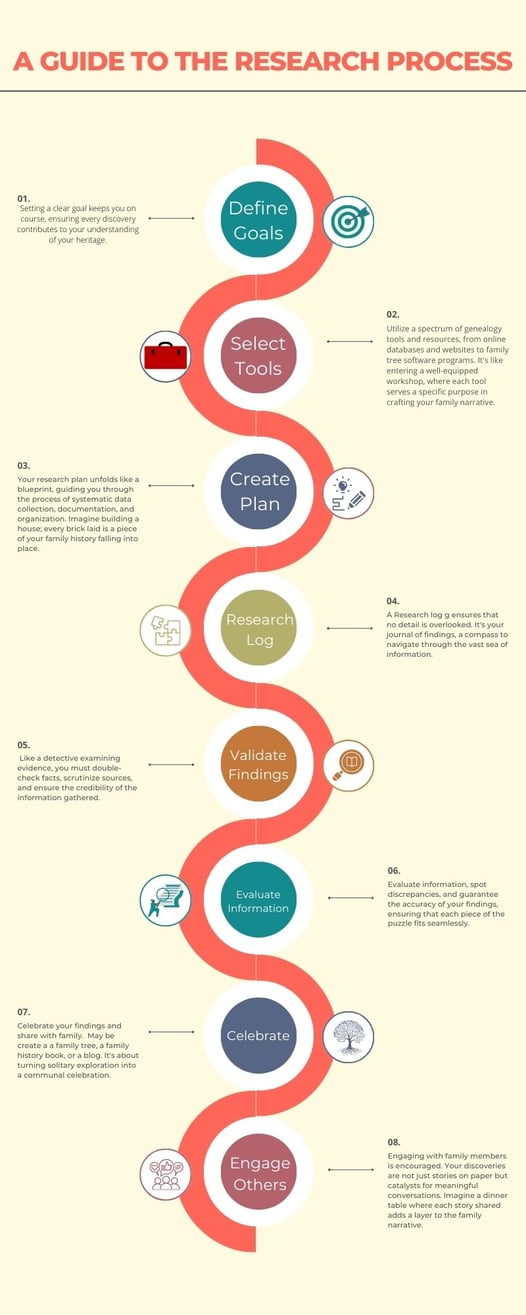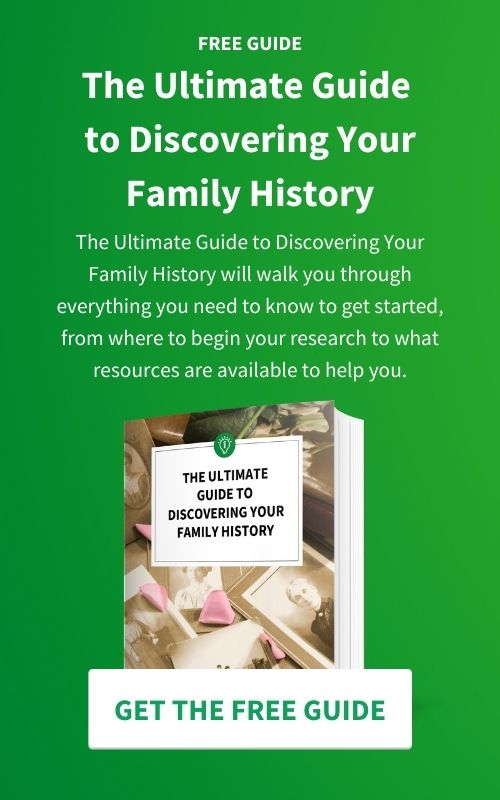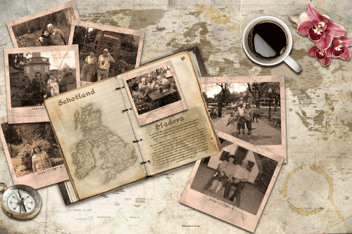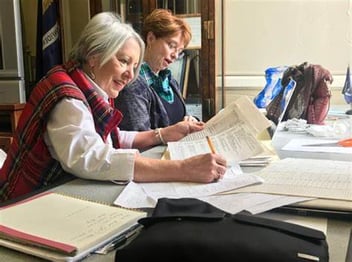Heritage Discovery Demystified: Infographic Breaking Down the Genealogy Research Process
Embarking on the journey of discovering one's heritage is a profoundly enriching and fascinating experience. It allows individuals to connect with their roots, understand the stories that shape their family history, and forge a deeper sense of identity.
The allure of unraveling the past is undeniable, and in the digital age, an infographic proves to be an invaluable tool in simplifying the genealogy research process.
The visual representation aids in breaking down complex steps, making it accessible and engaging for individuals eager to explore their lineage. By emphasizing the significance of this endeavor, we inspire readers to delve into their family history, unlocking a world of discovery.
Understanding Your Research Goal
The first crucial step in any genealogy journey is defining a clear research goal. This initial stage involves outlining specific objectives, whether it be tracing a particular lineage, uncovering immigration records, or exploring ancestral occupations. Setting a well-defined goal is paramount as it serves as a guiding compass throughout the research process. By understanding the importance of this foundational step, individuals gain direction and focus, preventing them from getting lost in the vast sea of historical data. A clear research goal not only streamlines the genealogy process but also instills a sense of purpose and motivation in researchers, propelling them toward meaningful discoveries.
Choosing the Right Genealogy Tools
With the wealth of genealogy tools available, selecting the right ones is a pivotal decision. Online databases, genealogy websites, and family tree software programs offer diverse avenues for exploration. Tailoring the choice of tools to individual research goals and preferences ensures a more efficient and personalized experience. By presenting various options and offering tips on selection, individuals can navigate the vast landscape of genealogy resources with confidence. Armed with the right tools, researchers can enhance their ability to uncover hidden gems in their family history, bringing them one step closer to a comprehensive understanding of their heritage.
In the expansive realm of genealogy research, a diverse array of tools and resources awaits those eager to uncover their heritage. Online databases serve as treasure troves of information, housing vast collections of historical records such as census data, birth and death certificates, and immigration records. These databases, like Ancestry.com and MyHeritage, empower researchers to navigate through centuries of data, enabling them to piece together the puzzle of their family history. Additionally, genealogy websites provide valuable insights, offering forums, community support, and access to specialized archives. Websites such as FamilySearch and Geni foster collaboration among researchers, creating a collective effort to trace lineages and share discoveries.
Family tree software programs play a pivotal role in organizing and visualizing the interconnected branches of one's ancestry. Software like Legacy Family Tree and Gramps allows users to construct detailed family trees, input data systematically, and visualize relationships across generations. These tools serve as virtual canvases, allowing researchers to craft a comprehensive picture of their familial roots. To navigate this rich landscape of genealogy tools effectively, it is essential to consider individual research goals and preferences. Tailoring the choice of tools to the specific objectives of the researcher ensures a more fruitful exploration. Whether one is focused on tracing a particular line, exploring geographical roots, or delving into historical occupations, selecting tools that align with these goals enhances the precision and relevance of the research journey. By offering guidance on tool selection based on individual needs, researchers can navigate the vast sea of options with confidence, maximizing the potential for meaningful discoveries.
Conducting Systematic Research
Embarking on a genealogy research journey without a well-structured plan is akin to navigating uncharted waters without a map. The importance of developing a research plan cannot be overstated. It serves as a roadmap, guiding researchers through the labyrinth of historical records and archives. A research plan outlines specific objectives, delineates the sources to be explored, and establishes a systematic approach to unraveling family history. By defining a clear path, researchers not only streamline their efforts but also avoid the pitfalls of aimless exploration, ensuring that every step taken contributes meaningfully to the overall goal.
Equally crucial in the genealogy research process is the maintenance of a comprehensive research log. This tool functions as a dynamic record-keeping system, documenting every search, discovery, and dead-end encountered along the way. A research log not only aids in tracking progress but also prevents duplication of efforts by noting unsuccessful attempts or sources already explored. This organized documentation becomes an invaluable asset, allowing researchers to retrace their steps, reassess strategies, and build upon previous findings. Through the meticulous upkeep of a research log, individuals gain a clearer perspective on the evolution of their research, empowering them to make informed decisions and adapt their approach as needed.
Visualizing the systematic research process is crucial for researchers to grasp the intricacies involved. An infographic can be a powerful tool to illustrate the step-by-step methodology of collecting data, gathering documentation, and organizing information. Visual examples can showcase the creation of a research plan, highlighting key components such as setting objectives, defining scope, and identifying potential sources. The infographic can then depict the systematic collection of data, demonstrating how to navigate online databases, access historical records, and extract relevant information. Furthermore, visual aids can illustrate the importance of organizing information, showcasing the creation of family trees, timelines, and other visual representations that help researchers make sense of complex genealogical connections. Through these visual cues, the infographic becomes a dynamic guide, simplifying the research process and empowering individuals to undertake their heritage discovery journey with confidence and clarity.
Verifying and Analyzing Information
In the pursuit of uncovering one's heritage, the significance of verifying research findings cannot be overstated. While the thrill of discovery is exhilarating, it is essential to approach genealogical research with a critical eye. Double-checking facts and considering the credibility of sources are fundamental steps in ensuring the accuracy of the information gathered. Genealogy enthusiasts often encounter the challenge of relying on secondary or unverified sources, and the risk of perpetuating inaccuracies is high. By emphasizing the importance of thorough verification, researchers can safeguard the integrity of their findings and contribute to the overall reliability of the genealogical community.
Guidance on how to evaluate gathered information is paramount in the process of ensuring accuracy. One key strategy is to cross-reference data across multiple sources. Consistency among records from different archives or independent accounts strengthens the reliability of the information. Additionally, scrutinizing primary sources, such as official documents and firsthand accounts, adds credibility to the research. Researchers should be attuned to potential discrepancies, conflicting information, or inaccuracies that may arise during their investigation. Anomalies in names, dates, or locations should raise red flags and prompt a deeper investigation to reconcile conflicting details.
Considering the context of historical events and societal norms is another vital aspect of the analysis. Understanding the cultural and historical backdrop of the time in question aids researchers in making sense of discrepancies and ensuring that their interpretations are grounded in a nuanced understanding of the past. Furthermore, collaborating with fellow researchers, engaging in genealogical forums, and seeking guidance from experienced experts can provide valuable perspectives and insights. The collective effort of the genealogical community contributes to the refinement and accuracy of individual research findings. By instilling a culture of meticulous verification and thoughtful analysis, genealogists can confidently contribute to a more robust and reliable portrayal of their ancestral history.
Sharing Your Heritage Discovery
The culmination of a genealogy research journey is not only about personal enlightenment but also about connecting with others and preserving the rich tapestry of family history for future generations. Once the research is complete, the next rewarding step is to share these newfound discoveries with family and friends. An effective and visually compelling way to convey the intricate web of relationships and historical details is through the creation of a family tree. There are numerous online platforms and software, such as MyHeritage and Ancestry.com, that allow researchers to construct and share interactive family trees with relatives. By illustrating connections and showcasing key details, a family tree becomes a dynamic representation of one's heritage, fostering a sense of shared identity among family members.
Beyond the digital realm, researchers can encapsulate their findings in a more tangible form, such as a family history book. This approach allows for a deeper exploration of individual stories, incorporating narratives, photographs, and relevant documents. Creating a family history book not only preserves the research for future generations but also provides a meaningful and personalized gift for family members. Alternatively, for those inclined towards a more contemporary medium, starting a genealogy blog can serve as a platform to share ongoing research, reflections, and insights. Blogs enable researchers to connect with a wider audience, potentially discovering distant relatives or like-minded individuals interested in similar lines of research.
Encouraging readers to engage with their family members is paramount to fostering a sense of shared heritage. The process of unveiling family secrets, exploring ancestral connections, and understanding the context of historical events becomes a catalyst for meaningful conversations. Readers are encouraged not only to share the facts and figures uncovered during their research but also to delve into the personal stories and experiences that breathe life into the family history. By actively involving family members in the exploration of their shared past, individuals can forge stronger bonds, create lasting memories, and ensure that the legacy of their heritage is cherished by generations to come.
In the captivating journey of uncovering one's heritage, the blog has emphasized the critical steps in the genealogy research process. From establishing clear research goals and selecting the right tools to conducting systematic research and verifying information, each stage contributes to the rich tapestry of family history. The importance of a well-developed research plan, meticulous record-keeping through a research log, and the need to verify findings and consider source credibility have been highlighted as essential components of a successful genealogy quest.
To aid researchers in this complex but rewarding journey, I have included a an infographic that visually breaks down the genealogy research process. This infographic serves as a dynamic guide, offering visual examples of how to set research goals, choose appropriate tools, conduct systematic research, and verify and analyze information. The visual representation enhances clarity, making the intricate steps of genealogy research accessible and engaging.

In conclusion, the blog encourages readers to embark on their heritage discovery journey armed with the knowledge gained from each stage of the process. By setting clear goals, utilizing the right tools, conducting research systematically, and verifying information rigorously, individuals can navigate the vast landscape of their family history with confidence. The ultimate goal is not only personal enlightenment but also the preservation of family stories for future generations. The infographic serves as a compass, guiding genealogy enthusiasts through the twists and turns of their ancestral exploration, unlocking the fascinating stories that lie within their family's past.

Article by Carol Walsh
Carol Walsh is the CEO of Creative Roots, a professional genealogy company. She has a passion for preserving family history and storytelling. Carol's research methodology centers around fact-finding and publishing in a format that readers can use to preserve the stories. Her ultimate goal is to help families connect with their past and each other.





